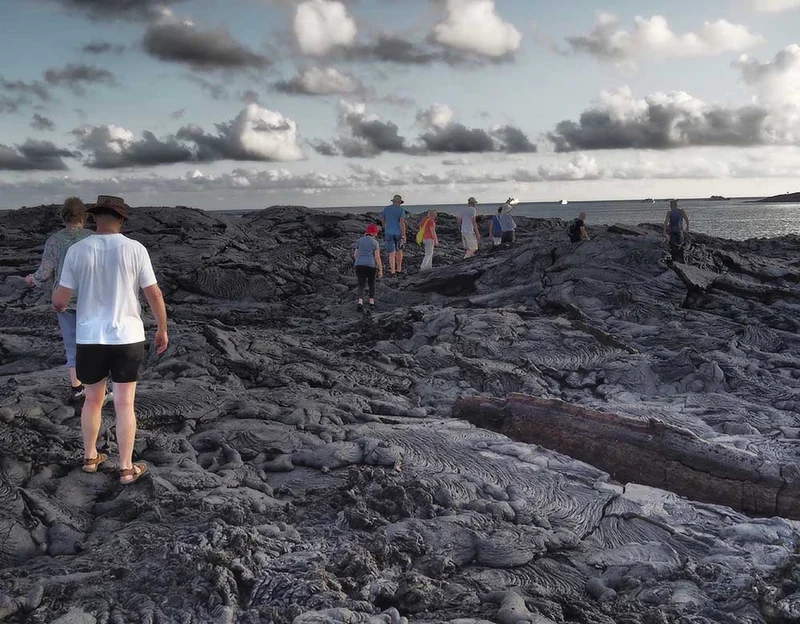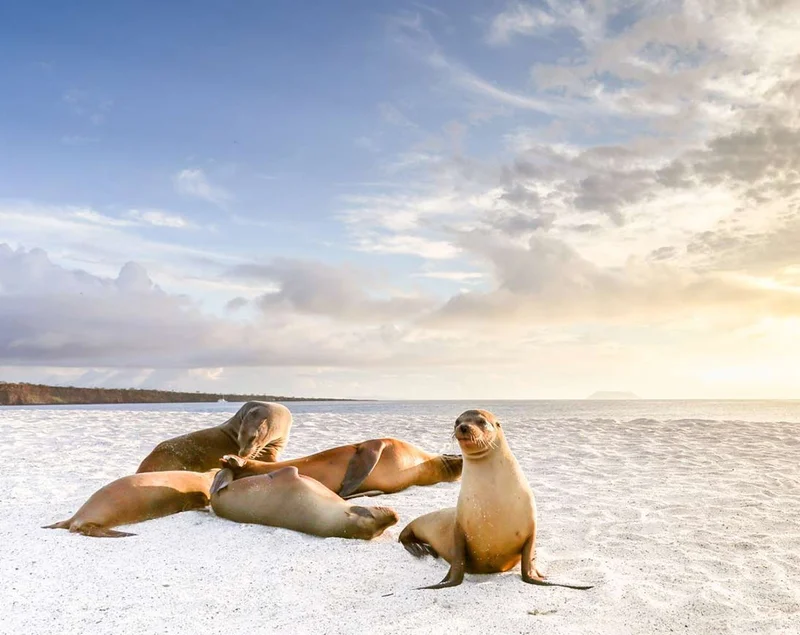
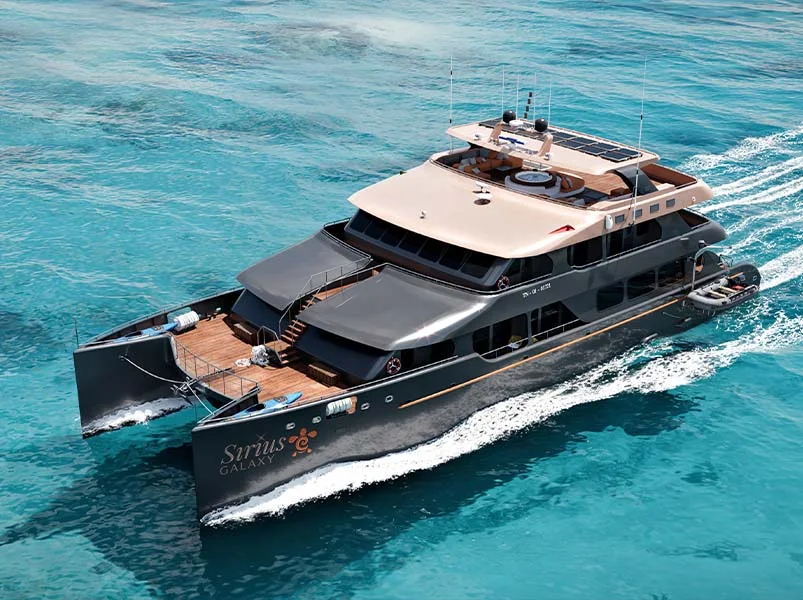
5 Day Galapagos Itinerary
Day 1: San Cristobal Island: Lobos Island
Departure to the Galapagos Islands, arrival at San Cristobal airport, where our naturalist guide of the National Park will be waiting for you.
Lobos Island
Lobos island is a small islet separated from San Cristobal by a narrow channel, forming a sheltered bay where sea lion pups play in tidal pools. Despite its small size, the island is surprisingly packed with wildlife, especially with “lobos marinos”, the Spanish name for sea lions. Groups of sea lions will welcome you at the landing spot, but as you walk a few steps inland, male frigatebirds displaying their inflated red balloons will be perched on the bushes and trees. A small colony of blue footed boobies, which often nest right on the trail, will give you the opportunity to observe their famous courtship dance.
Day 2: Española Island: Gardner Bay & Suarez Point
Gardner Bay
Gardner beach is undoubtedly one of the most beautiful and interesting beaches to visit in the Galapagos. Its fine coral sand and turquoise water give it a totally tropical appearance, which contrasts with the presence of sea lions basking in the beach. You will have the opportunity to walk along the beach and learn about the biology of sea lions and other endemic species, such as the Española mockingbird, marine iguanas and Galapagos hawks.
Suarez Point
This rocky trail is one the most amazing nature walks you can do in the Galapagos islands.
From the moment you set foot on the island and all the way along the trail the amount and diversity of fauna is truly amazing. Sea lions and marine iguanas will be the first ones welcoming us, followed by large colonies of sea birds, including Nazca and Blue-footed boobies, gulls and tropicbirds. At the end of the trail we will visit a colony of waved albatross (April to January), the largest bird in the islands and one of the most interesting because of its powerful flight and elaborate courtship. Waved albatross only nest at Española, so this is the only place where you will see them at close range.
Day 3: Floreana Island: Post Office Bay, Cormorant Point & Devil's Crown
Post Office Bay
Floreana is famous for the tales of German settlers and the baroness during the late 1920’s and 30 ‘s. Assassinations, disappearances and other unsolved mysteries are the ingredients of this fascinating story.
Post office bay was often used by whalers to anchor their ships and go up to the highlands to get freshwater and tortoises. Most boats visiting the Galapagos had to came to this place sooner or later, so a system of mail was established more than 200 years ago: a barrel near the beach became the way to leave messages to other ships and also to the outside world. This mail system is still in use and will allow you to send postcards from the Galapagos to the outside world.
Aside from a small beautiful beach and a lava tunnel, the area is great for dinghy tours to look for sea lions, green sea turtles, shorebirds, small sharks and, with some luck, Galapagos penguins.
Cormorant Point & Devil's Crown
Punta Cormorant is located in the north of Floreana and it is known for its large coastal lagoon with American flamingoes, white-cheeked pintails, black-necked stilts and other shorebirds. There is a beautiful white sand beach which is an important nesting ground for green sea turtles where we can also see rays and reef sharks. In the last years, a small groups of blue footed boobies have started to breed right by the trail. This is also a great trail to look at endemic plants.
Day 4: Santa Fe Island & South Plaza Island
Santa Fe Island
Giant Prickly-pear cactus and barren lava rocks surround the landing spot at Santa Fe, located inside one of the most beautiful bays in the Galapagos. Turquoise water and white sand beaches make this location a perfect home for a large colony of sea lions which you will see basking in the sand. Inland, look down for endemic Santa Fe land iguanas, but also look up for Galapagos hawks, which often perch at the top of the cactus looking for prey. Darwin finches, Galapagos doves, mockingbirds and lava lizards are also common along the trail.
South Plaza Island
Of the two twin islands, only South Plaza is allowed to be visited, while North plazas is kept exclusively for scientific research. This is a small islet, but it packs an impressive amount of wildlife. Right after you land you will see Galapagos land iguanas waiting under prickly-pear cactus feed on their fruits. A large colony of sea lions will give you the opportunity to see playful pups enjoying the tide pools, but also large grumpy males defending their territories. The trail will take you to a cliff where you can observe many sea birds, such as frigatebirds, red-billed tropicbirds, boobies, swallow-tailed gulls and pelicans. A reddish succulent vegetation with scattered cactus covers most of the islands like a carpet, giving this island a unique personality.
Day 5: Santa Cruz Island: Charles Darwin Station
The Charles Darwin Station is a nonprofit organization which has been working for decades together with the Galapagos National Park to preserve the biodiversity of these unique islands. During this visit you will learn about the projects that both institutions carry together to protect the native species and eradicate the invasive ones which are threatening the Galapagos environment. One of the most important and emblematic projects has been reproducing giant tortoises in captivity. The visit is mostly outdoors in a beautiful dry native forest with giant cactus and many other interesting native plants. It is also a fantastic place to find several endemic Darwin finches, as well as flycatchers and mockingbirds.
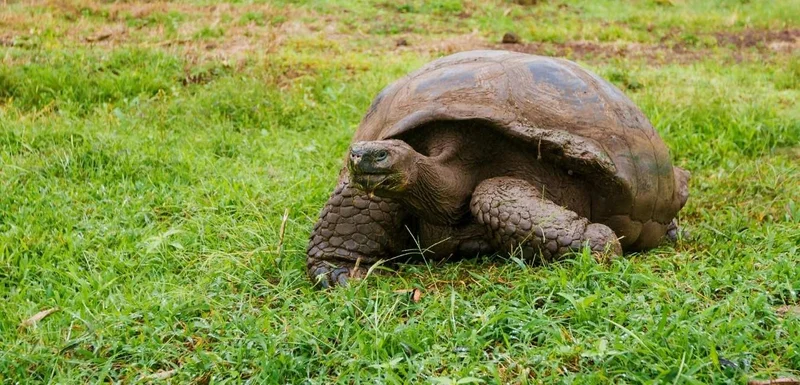

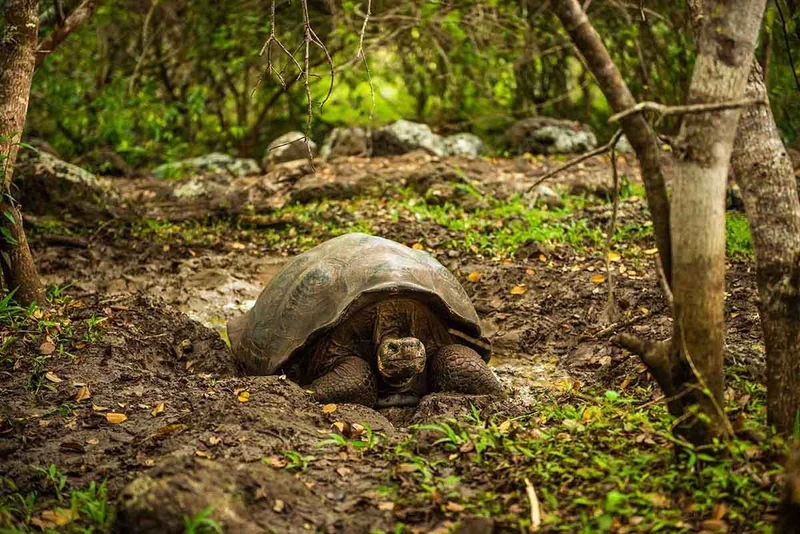
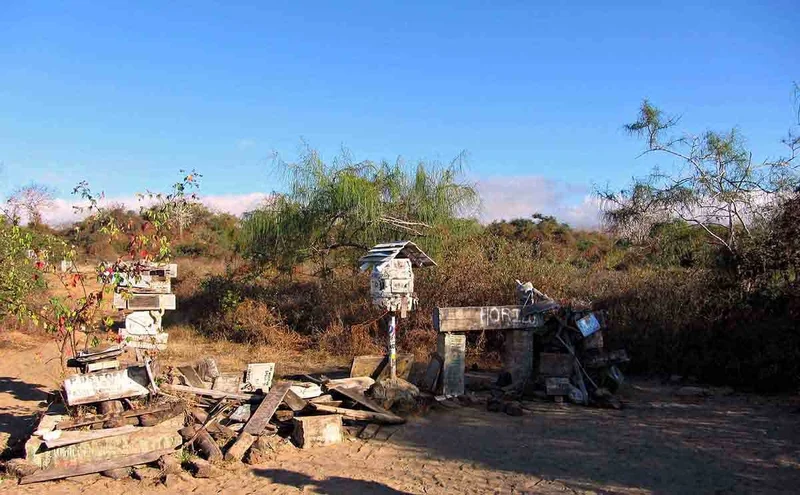
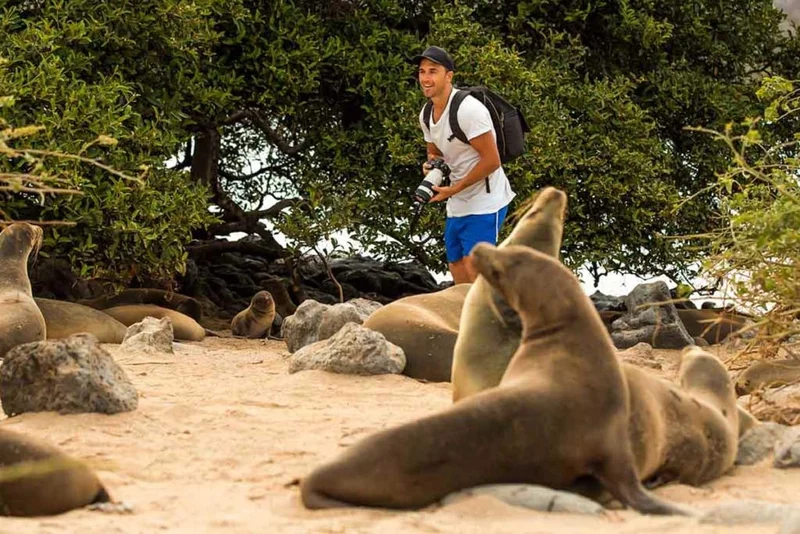




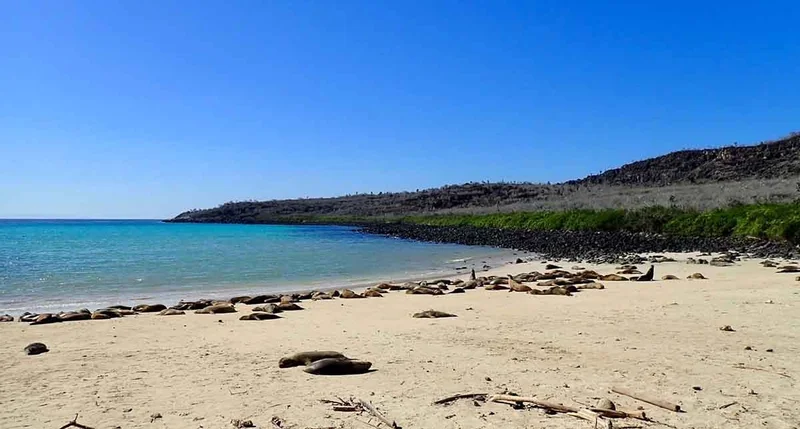

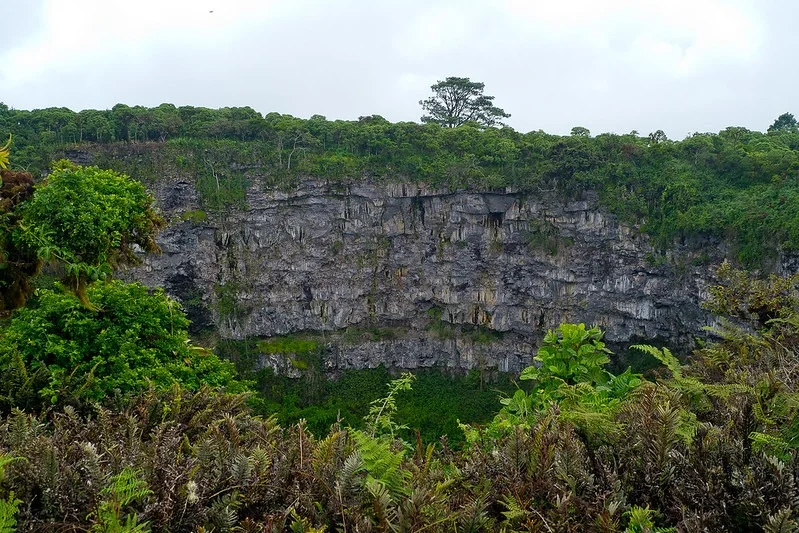
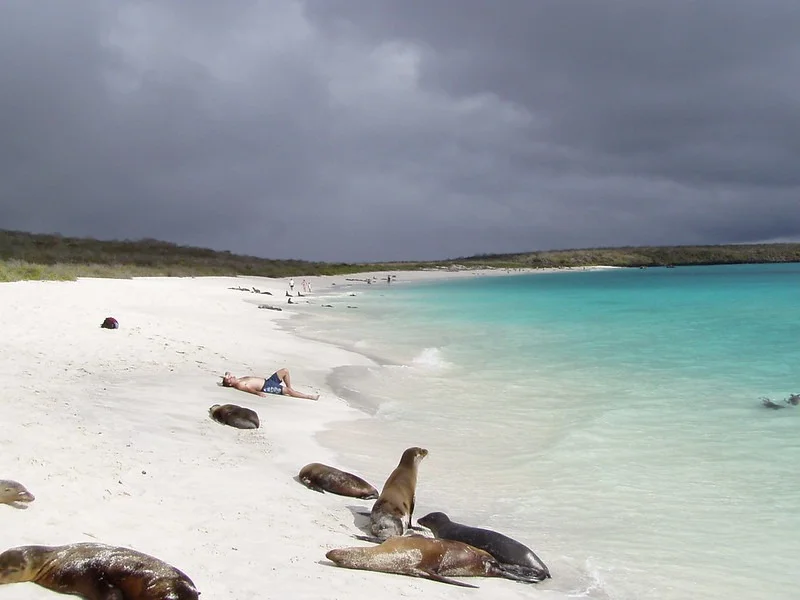
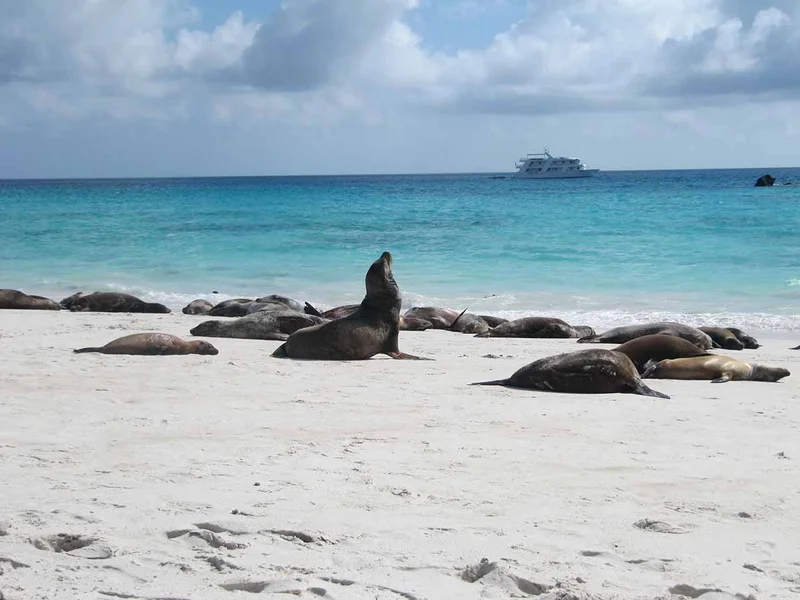

5 Day Galapagos Itinerary Includes
- Airport assistance
- Transfers in Galapagos
- Accommodation in double cabin
- All meals during the cruise
- Naturalist Bilingual Guide
- All visits & excursions according to the itinerary
- Snorkel Gear (mask, tube and fins)
- Kayaks, paddle boards
- Unlimited purified water, coffee and tea
- Wetsuits, soft drinks, beach towels
5 Day Galapagos Itinerary Does not Include
- Local flight to/from Galapagos
- Galapagos National Park Entrance fee
- Entrada al Parque Nacional Galápagos
- Alcoholic drinks
- Tips
- Local Taxes
- Travel Insurance
- Service do not specified
5 Day Galapagos Itinerary Highlights
- Galapagos sea lions, marine Iguanas, magnificent & great frigatebirds, blue-footed Boobies, San Cristobal Lava Lizards.
- Coral sand beach, Galapagos hawks, Española mockingbirds, Darwin finches.
- Waved Albatross, Nazca Boobies, Red-billed Tropicbirds, Swallow-tailed gulls, herons, herons.
- Sea turtles, finches, shorebirds, penguins.
- American flamingo, frigatebirds, tropicbirds, Galapagos shearwaters, sea turtle nesting site.
- Giant cactus, Galapagos doves, reef sharks.
- Galapagos land iguanas, pelicans, Galapagos shearwaters, swallow-tailed gulls.
- Galapagos giant tortoise & land iguanas breeding program, Galapagos flycatchers, yellow warblers.
Itinerary Map

Dates & Promotions
Dates |
|---|
No data |
Animals you might see on this itinerary:
More information about the Galapagos Islands you visit in this 5 day itinerary:
Itinerary A 5 Days - Galaxy Sirius Catamaran
Why travel with us?
Similar Itineraries

